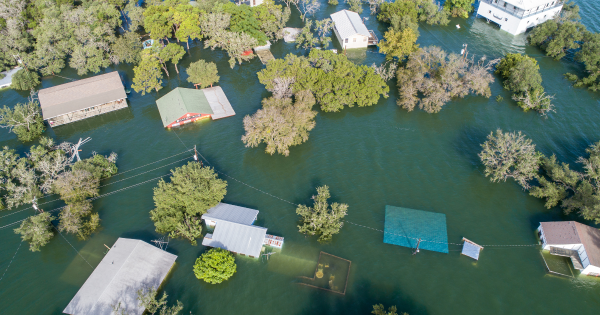
After disaster, harnessing the power of spontaneous volunteers
Emergencies and natural disasters can cause untold damage, but they can also bring out the best in people. In the aftermath of a bushfire or a missing person’s report, disaster sites are often inundated with everyday citizens who show up wanting to help.
In the disaster response community, these people are known as ‘spontaneous volunteers’ – ordinary people who are inspired to give their time and efforts to help those around them.
But, while these volunteers offer exciting potential in disaster relief scenarios, emergency services agencies are yet to fully leverage their value.
Our emergency responders are being pushed to the limit in terms of the resources that they have. They need additional manpower to continue supporting communities after disaster. – Dr Kate Delmo, a specialist in crisis, emergency and disaster risk resilience research at UTS.
‘With spontaneous volunteers, they have that additional manpower showing up, yet we seem not to understand how to fully engage with them.’
Driving collaboration between formal and informal responders
Dr Delmo is leading the development of a framework to integrate spontaneous volunteers into frontline disaster preparedness, response and recovery initiatives. The work, which is supported by a UTS Social Impact Grant and the UTS Faculty of Arts and Social Sciences, will draw on a program of research based in the Lismore and Northern Rivers areas in NSW in the aftermath of the 2022 floods.
In partnership with Alex Rixon-Booth, CEO of emergency management software provider CommandPost, and Elly Bird of Resilient Lismore, a community-led recovery organisation, Dr Delmo conducted a series of stakeholder consultations with NSW disaster relief agencies and volunteers who responded to the floods.
The consultation sessions gave emergency and disaster responders and spontaneous volunteers an opportunity to discuss frontline realities that both groups face when they respond to and recover from crisis. – Dr Delmo.
Next, the research team coordinated a simulated activity with emergency responders, including representatives from the NSW State Emergency Service, NSW Ambulance, the NSW Police Force and other stakeholders. This exercise revealed the on-the-ground challenges that were preventing effective collaboration with spontaneous volunteers.
These included a lack of training and experience among spontaneous volunteers that can increase the risk of accidents and injuries; a lack of understanding of the disaster response strategy and priorities; an overwhelming response at the disaster site, which can create coordination challenges for disaster response agencies; and inappropriate actions that can interfere with ongoing response efforts.
‘The research has provided detailed insights into the motives and importance of spontaneous volunteering, along with how emergency service agencies can most effectively lead and interface with community-led efforts,’ says Mr Rixon-Booth.
‘These findings will help government agencies further identify, plan and incorporate spontaneous volunteering into disaster/relief plans for the safety and immediate mobilisation of response efforts.’

Kate Delmo with Alex Rixon-Booth (CEO, CommandPost) and Jay Ziino (workshop facilitator; Rescue Pty Ltd).
Enabling better planning for future disasters
The research will now be translated into a best-practice framework that will guide emergency response agencies to harness the potential of spontaneous volunteers in their response and recovery activities.
In October last year, Dr Delmo presented the project to the NSW Department of Premier and Cabinet; the work has since been included as a resource in a departmental report to the State Premier that detailed gaps in the state’s emergency and disaster management approach.
As climate change drives more frequent and severe natural disasters, emergency services agencies will increasingly be pushed to the brink. Harnessing the power and passion of volunteers in a streamlined and coordinated way will be key to expanding the disaster relief workforce during and after disaster.
‘Spontaneous volunteers have knowledge of the local terrain; they know community members and leaders. That local knowledge is specialised, and it’s going to be of real value to effective disaster response,’ Dr Delmo says.
The problem
Spontaneous volunteers who respond to emergencies and disasters have good intentions but can often complicate responses due to their lack of training and unclear protocols. This project aimed to integrate spontaneous volunteers into emergency and disaster response efforts more effectively.
The response
This project sought to understand these challenges, provide recommendations to government units, and clarify the roles and responsibilities of spontaneous volunteers in coordinated disaster initiatives. This involved developing a framework to integrate spontaneous volunteerism into frontline emergency and disaster initiatives, identifying coordination challenges, and recognising the valuable contribution of spontaneous volunteerism in disaster preparedness, response and recovery.
What helped accomplish this?
The project's success was driven by consultation sessions where emergency responders and spontaneous volunteers discussed frontline challenges in crisis response and recovery. These sessions revealed a critical lack of dialogue between the groups, impacting coordination efforts crucial for saving lives and property during disasters. Key agencies emphasised the need for ongoing dialogues to address coordination gaps in Australia's disaster frameworks.
What has changed as a result?
Enhanced coordination between spontaneous volunteerism and formal emergency response efforts in areas like Lismore, NSW. A working framework has been developed for presentation to local councils, volunteer groups and government agencies in the emergency management sector. This framework is intended to stimulate discussions and inform policies and guidelines for managing spontaneous volunteerism across Australian communities. These efforts aim to foster sustainable practices that encourage effective volunteer participation during emergencies and disasters, with the goal of broadening the project's impact.
Additional resources
Project lead
Project partners
- Alex Rixon-Booth, CEO, CommandPost
- Elly Bird, Executive Director, Resilient Lismore
- Dr Emily Booth (Research Assistant, UTS)

